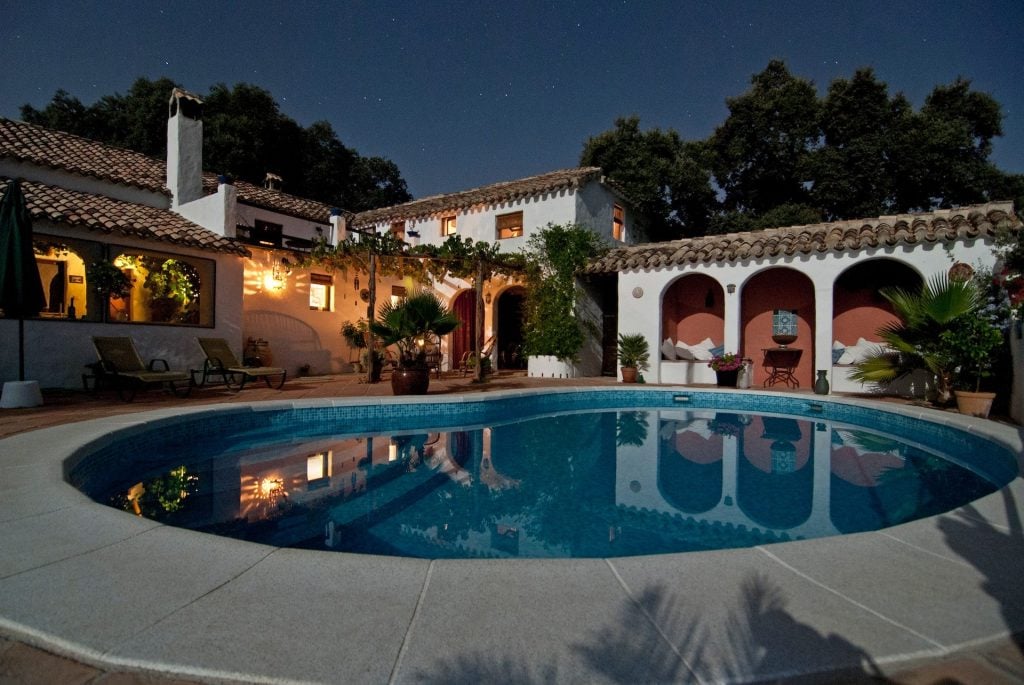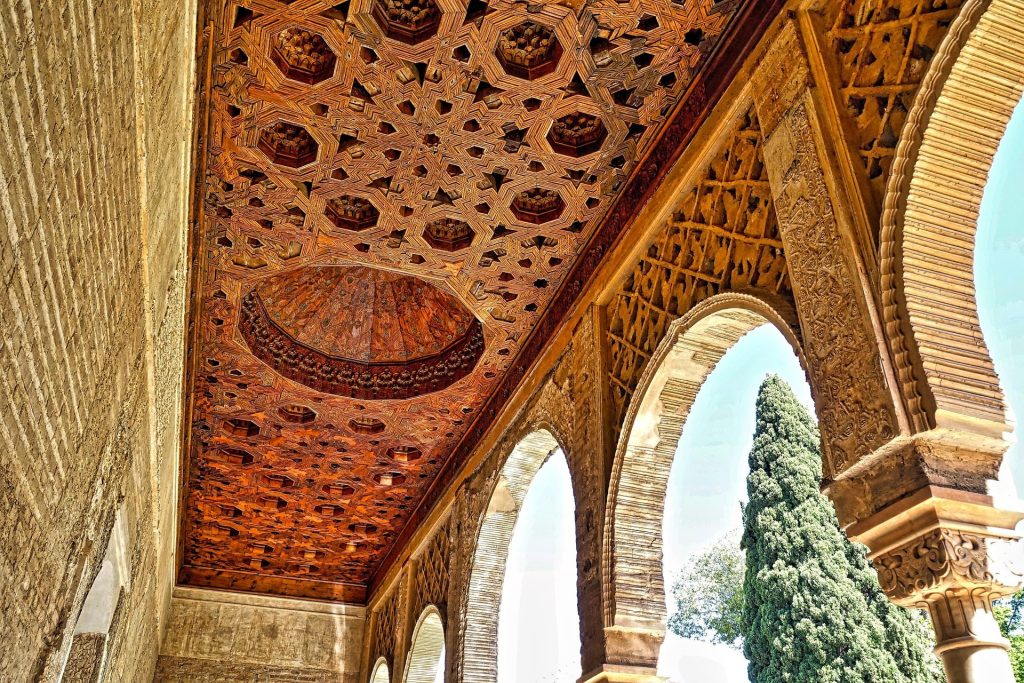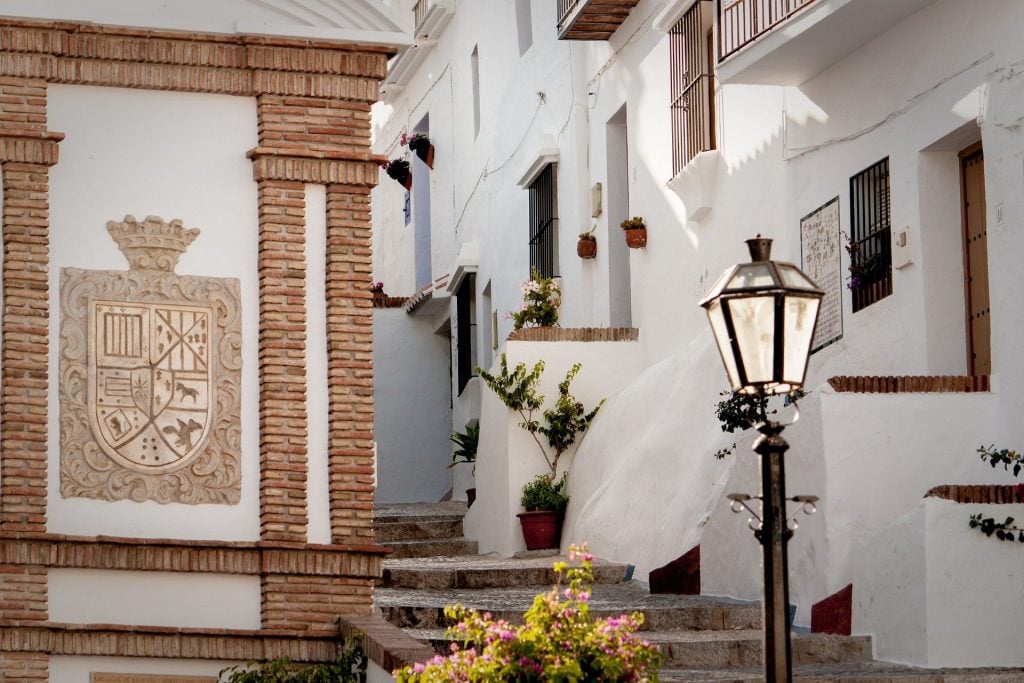BLOGS
Traditional Spanish Decor: Tips for Achieving a Classic Look
“Spanish décor has a long history influenced by many civilizations and aesthetic groups.”
It’s no surprise that homes decorated in traditional Spanish design are still popular today, given the elegance and durability of the style’s hallmark elements.
Traditional Spanish decor produces a warm and inviting ambiance that is elegant and cozy with its vivid colors, exquisite details, and ornate patterns. Moreover, Spanish-style homes have cozy and welcoming room that reflects Spain’s distinct beauty and rich history by delving into the color palettes, materials, furniture, fabrics, accessories, and lighting typical of this design style.
Traditional Spanish decor can help you create the perfect atmosphere in your living room, dining room, or bedroom if that’s what you want.
In this article, we’ll look at how to decorate your home with traditional Spanish elements for a look that will stand the test of time.
History of Spanish Decor
Spanish decor has a rich history that spans centuries and is influenced by various cultures and art movements. The earliest known form of Spanish decor can be traced back to the pre-Roman era when the indigenous Iberian people created intricate designs using natural materials like stone and clay.
During the Moorish occupation of Spain in the 8th century, Islamic art and architecture heavily influenced Spanish decor. This is where the use of bright colors, intricate patterns, and geometric shapes became prominent in Spanish decor.

In the 15th and 16th centuries, Spain became a dominant world power, and its decor reflected its wealth and influence. This period, known as the Spanish Renaissance, saw the emergence of elaborate decorations, such as ornate carvings, gilded frames, and rich tapestries, that adorned palaces, churches, and other public buildings.
The Baroque period that followed, from the 17th to the early 18th century, brought even more elaborate and ornate decorations to Spanish decor. This was a time of grandeur and extravagance, characterized by luxurious fabrics, heavy use of gold leaf, and highly decorative furnishings.
In the 19th and early 20th centuries, Spanish decor shifted towards a more restrained and simplified aesthetic, influenced by the Arts and Crafts movement and the emerging Modernist movement. The use of wrought iron, stucco, and hand-painted tiles became more prominent, while the excessive ornamentation of previous eras was toned down.
Today, Spanish decor continues to evolve, with traditional elements still prevalent but updated with modern touches. Whether you prefer the elaborate decorations of the Baroque period or the simple and refined elegance of modern Spanish decor, there is a style to suit every taste.
What’s the difference between Spanish Colonial and Spanish Revival?
Both styles of building and design, Spanish Colonial and Spanish Revival, have some things in common, but they are also very different.
Spanish Colonial is a style of architecture that was popular in the Americas when the Spanish ruled them from the 16th to the 19th centuries. This style uses local materials and traditional building methods, like adobe bricks, wooden beams, and red clay tile roofs. Spanish Colonial houses often have courtyards or central patios, thick walls to keep the inside cool, and decorative elements like wrought-iron balconies, carved wooden doors, and colorful tiles.
On the other hand, Spanish Revival is a style of architecture and interior design from the 20th century that was popular in the United States from the 1910s to the 1930s. It is a new take on the Spanish Colonial style. Spanish Revival houses often have stucco walls, red tile roofs, and doorways and windows with arches. There may be fancy features like colorful tiles, wrought-iron fixtures, and carved wood in the interiors. Spanish Revival homes often have places to hang out outside, like patios, balconies, or gardens.
In short, Spanish Colonial is the original style of architecture that grew out of Spain’s settlement of the Americas. Spanish Revival, on the other hand, is a revival of that style that came about in the early 20th century with some modern influences.

Spanish homes decor – ways to create the feeling of vacation every day in your decor
Traditional Spanish decor draws inspiration from Spain’s long architectural and artistic achievement history. This aesthetic was motivated by the country’s singular natural landscape and materials and its proximity to the Mediterranean and Moorish cultures.
The architecture and art of Spain today are undeniably influenced by the many cultures that have lived and thrived in the region over the centuries. Achieving Spanish design in Your Home can be challenging and will require a lot of effort and research but these simple ways can be helpful to achieve your dream Spanish style home:
- Use warm colors: Spanish decor is known for its rich and warm colors, such as terracotta, red, yellow, and orange. Paint your walls or use textiles in these colors to create a cozy and inviting space.
- Add wrought iron accents: Wrought iron accents, such as light fixtures, wall sconces, and furniture, are a classic element of Spanish decor. They add a touch of elegance and rustic charm to any room.
- Include decorative tiles: Hand-painted tiles are a hallmark of Spanish decor, and they can be used in a variety of ways, from backsplashes and flooring to decorative accents on furniture or walls.
- Incorporate natural materials: Natural materials like wood, stone, and clay are prevalent in Spanish decor. Use them in your flooring, walls, or furniture to create a rustic and warm atmosphere. You can also pair bright blues with wood.
- Use traditional patterns: Spanish decor often incorporates patterns like damask, paisley, and floral designs. Use them in textiles, wallpaper, or upholstery to add depth and texture to your space.
- Add greenery: For Spanish accents, incorporate lush greenery like potted plants, herbs, and citrus trees. They add a touch of freshness and vitality to any room.
- Create a cozy seating area: Spanish homes are known for their inviting and comfortable seating areas, such as a cozy nook or a large family-style table. Create a space that encourages relaxation and socialization, and you’ll feel like you’re on vacation every day in your own home.
- Pendant lights from Spain: In Spanish home designs, old Spanish lanterns often hang from the roof and light up the room. If you want to decorate in a traditional Spanish style, these vintage-style ceiling lights are a great way to do it.
- Spanish ceramics: Spain has a long history of making pottery, so it’s not surprising that many Spanish-style homes have lots of beautiful clay pieces in earthy colors and neutral tones. Here is an example of how to decorate built-in bookshelves in a Spanish way.
- Decorate the outside: Another important part of this design idea is to decorate the outside in a Spanish way. With a few key pieces, you can turn a courtyard or small outdoor area into a cute retreat in the style of Spain. Start with a beautiful floor tile with a pattern, then add comfy chairs and a fire pit for evening gatherings under the stars. You’ll get the mood you want with string lights. Make sure to use big planters to add some greenery to the room.

Modern and Traditional Spanish Home for You
The decor inspired by a Spanish style but modified for the modern day features sleeker lines and more geometric shapes. Modern Spanish home decor is a contemporary take on traditional Spanish design, incorporating updated elements and a cleaner aesthetic.
While traditional Spanish decor is known for its bold colors, ornate details, and rustic charm, modern Spanish decor takes a more streamlined approach, with a focus on minimalism and natural materials.
In this style, old meets new as traditional Spanish elements are mixed with contemporary design elements to create a warm and inviting space that is both stylish and practical.
If you’re in search of Spanish-style homes, you can check Brittany’s luxury estate in Santa Rosa. Pontevedra Estate gives off the vibe of the Spanish peaceful haven, with all of its amenities conveniently close at hand and each of its neighborhoods distinguished by a central plaza that serves as an arterial spine.
Suggested Read: Spanish-Style Homes: Smart Investment In Today’s Market
Suggested Read: Exquisite Craftsmanship Of Spanish Architecture
Suggested Read: Guide To Spanish-Themed House Design
Suggested Read: Colors Of A Rustic Spanish Style
Suggested Read: Bringing The Colors of Spain















